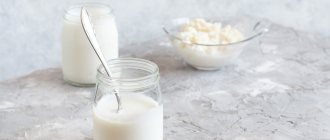General rules
Colitis is an inflammation of the colon mucosa. enterocolitis ) and stomach ( gastroenterocolitis are additionally involved in the inflammatory process .
According to the course of the disease there are:
- spicy;
- chronic.
If acute develops as a result of eating food contaminated with microorganisms, then with pseudomembranous, which also occurs acutely, the cause is the use of medications (in particular, antibiotics cephalosporins , Clindamycin , Tetracycline and Erythromycin ).
At the initial stage of acute colitis, general malaise, nausea, loss of appetite, abdominal pain and diarrhea . The pain is most often localized in the iliac regions. The stools are frequent, offensive, and at first fecal in nature, and then become scanty with mucus and blood. In the first days of the disease, you need to follow bed rest and diet in addition to drug treatment. Acute colitis does not cause gross morphological changes in the intestinal mucosa.
Chronic colitis is accompanied by inflammatory-dystrophic changes in the intestine and there is always a violation of its functions.
The causes of the chronic form of the disease are:
- previous intestinal infections;
- uncontrolled use of medications;
- constant endogenous intoxication;
- alcohol abuse;
- nutritional disorders (consumption of spicy and coarse, poorly digestible foods, monotonous, protein or carbohydrate nutrition).
The main symptoms of chronic colitis are alternating constipation with diarrhea or pasty stools, accompanied by pain that intensifies with defecation. The pain is aching or spastic in nature and is localized in the lower and lateral parts of the abdomen. Occurs most often 7 hours after eating; they typically decrease after the passage of gas. Many patients are bothered by nausea, bloating and belching .
If digestion is impaired, starch grains, neutral fat, and undigested muscle fibers are found in the feces. With a long course, chronic colitis is characterized by the progression of intestinal digestive disorders, which is accompanied by weight loss, the development of atrophy of fatty tissue and skeletal muscles, and an increase in protein and vitamin .
Treatment of the disease should be comprehensive, including anti-inflammatory drugs ( Sulfasalazine , Mesalazine ), enveloping and astringent drugs (for diarrhea ), physiotherapeutic treatment ( electrophoresis , diathermy , ozokerite , radon baths ). A prerequisite is therapeutic nutrition.
For symptoms of colitis at different stages and for intestinal dysfunction, treatment with diet is prescribed differentially.
So, for acute colitis and for exacerbation of chronic colitis, occurring with diarrhea, Diet No. 4 . It involves the exclusion of foods that cause increased intestinal motility (vegetables, bran, fiber) and stimulate the secretion of the pancreas, stomach and bile secretion. All products that cause fermentation and rotting are also excluded.
If constipation , Table No. 3 , enriched with fiber (bran bread, vegetables, vinaigrettes, vegetable juices).
Diet No. 2 is indicated for chronic colitis (without exacerbation) and concomitant chronic gastritis with reduced secretion, therefore it includes dishes and products that stimulate secretion (fermented milk drinks, broths, juices, berries, vegetables and fried dishes without a rough crust).
Diet No. 4 for colitis with diarrhea provides intestinal sparing, reduces inflammation and normalizes digestion, because it limits all kinds of irritants (mechanical, chemical and thermal).
Basic Rules:
- six meals a day, the basis of which is pureed, slimy soups, pureed, mushy, semi-liquid dishes;
- reducing the amount of fat (up to 70 g) and carbohydrates (250 g);
- physiological protein content (90 g);
- exclusion of foods containing fiber (vegetables, fruits, rye bread, whole grain bread and bran);
- exclusion of very hot and cold foods;
- boiled (steam) method of preparation;
- prohibition on hard and thick foods;
- implementation of the water regime (1.5-2 l);
- salt in the amount of 8-10 g.
Diet for ulcerative colitis
Nonspecific ulcerative colitis is an inflammation of the large intestine with the presence of ulcerative lesions of the mucous membrane, necrosis and hemorrhage. Most often, the process is localized in the rectum and colon, and with severe damage, all parts of the colon are involved. The causes of the disease have not been established. It is assumed that the basis is immunological disorders and hereditary predisposition, and the predisposing factor is the presence of infection.
With nonspecific ulcerative colitis, the patient is bothered by diarrhea mixed with blood or pus. The frequency of bowel movements reaches 20 times a day or more (in severe cases). Often there is blood in the stool and blood loss of 100-300 ml is possible per day. UC is characterized by severe cramping pain that intensifies after eating.
In severe cases, intoxication syndrome is observed with weakness, fever, decreased appetite, and systemic manifestations are also characteristic ( polyarthritis , eye and liver damage). , dystrophic syndrome develops (dry skin, weight loss, hypovitaminosis ).
With this disease, complete restoration of the mucous membrane and normalization of digestion and absorption do not occur for a long time. And only strict adherence to dietary nutrition and medications create the conditions for achieving remission. In this case, Table No. 4 and its varieties are assigned depending on the stage of the process.
Rice porridge with fruits
During an exacerbation, the diet includes liquid and pureed porridge (rice, semolina) in water (milk and broths are excluded). Buckwheat porridge enhances motor skills, so it is not recommended during an exacerbation. It is convenient to use porridge for baby food, but it needs to be diluted by half with water.
Includes dishes from lean meat and fish (in the form of boiled minced meat, dumplings, steamed cutlets, pates). Protein omelettes made from eggs are useful (no more than two per day). During an exacerbation, the amount of protein in the diet should be increased to 120-125 g.
Drinks include herbal decoctions, compotes and jelly, chokeberry juice. Baked apples and pears are allowed. Particular attention should be paid to products that reduce intestinal motility - decoctions and jelly from bird cherry, blueberry, quince, dogwood, pear, strong black and green tea. During an exacerbation, some patients do not tolerate even boiled vegetables well, so it is better to exclude them. Consumption of milk, fermented milk products, sour cream, cheeses and cottage cheese is also not recommended.
For a month after an exacerbation, it is necessary to strictly adhere to the diet; subsequently, it is recommended to switch to Table 4B and 4B and the general table with the restriction of certain foods for health reasons. After an exacerbation, foods that promote hematopoiesis are introduced into the diet, red and black caviar, walnuts, and meat broths are gradually added. During the period of stable remission, the consumption of vegetables (broccoli, cauliflower, carrots, zucchini, onions) is allowed.
Diet for IBS: can something healthy be tasty?
General principles of nutrition3
You can help your irritable bowel with a diet that requires you to eat regularly.
This means that it is important to eat at designated times and avoid eating in a hurry or while working. Eating at least 4-5 times a day in small portions will be optimal, and time intervals of 3-4 hours between meals will help the full digestion process: the breakdown of food with hydrochloric acid, the absorption of nutrients in the intestines and their entry into the blood in the required quantities . What not to do if you have irritable bowel?3
A mandatory condition of the diet for IBS is the exclusion from the diet of fatty foods, coffee, as well as foods that contribute to gas formation and bloating: cabbage, carbonated drinks, apples, black bread, radishes, products made from yeast dough. The consumption of sour and spicy foods, canned food and alcohol should be kept to a minimum.
What is low-FODMAP?
In most cases, the concept of “diet” is associated with dietary restrictions and giving up favorite foods. For people with signs of irritable bowel, a special diet, unlike others, has been developed. The diet was called low-FODMAP, which translated means “foods low in poorly digestible carbohydrates.”
Why is it important?
With IBS, the intestinal walls become especially sensitive. This means that the digestion process, which in a healthy state does not cause discomfort, in this case can cause pain. Products containing poorly digestible carbohydrates provoke fermentation processes and increased gas formation in the intestines and thereby aggravate the pain of Irritable Bowel Syndrome3.
The principle of the low-FODMAP diet is based on replacing poorly digestible foods with lighter analogues in order to avoid the unpleasant manifestations of Irritable Bowel Syndrome: pain in the abdomen, stool disorders and flatulence.
Many people may have the impression that if they follow a diet, their diet will definitely become meager and lacking in variety. However, the low-FODMAP diet is not restrictive, and unusual recipes can satisfy even the most discerning gourmets. The most important thing is to choose the right ingredients.
What is a low-FODMAP diet for IBS?
Main dishes
The diet may include beef, lamb, pork, chicken or turkey, and fish.
Dairy
Milk, cottage cheese, ice cream, cream cheese, and sour cream contain lactose, a protein from cow's milk. Each person’s body can digest a certain amount of lactose, and exceeding the individual norm can cause abdominal pain, increased gas formation, and bloating. In this case, it is better to give preference to milk and yoghurts without or with low lactose content. Hard and soft cheeses, such as brie, feta, mozzarella, tofu, are best suited for comfortable digestion.
Fruits and vegetables
Fruits such as pears, apples, plums, peaches, and their juices contain high amounts of fructose, which can worsen IBS symptoms.
The most suitable fruits for a healthy diet are bananas, oranges, strawberries, lemon, kiwi, melon, cranberries, blueberries, and tangerines.
Bell peppers, carrots, cucumbers, eggplants, zucchini, green beans, pumpkin, potatoes will help avoid excess gas formation and harmful effects on intestinal motility.
Legumes
(soybeans, lentils, peas, beans) include indigestible carbohydrates, which means they provoke flatulence.
What to replace legumes with? Pay attention to corn, rice, millet, oats. It is permissible to consume barley, rye, wheat (products that do not contain gluten).
Seasonings
Sauces made from recommended ingredients, vegetable or olive oils, soy sauce, pesto and salsa can add the finishing touch to your dish.
Varieties
The varieties are Diets 4A , 4B , 4B , differing in the set of products and indications for use.
Thus, Table 4A is recommended for colitis with a predominance of fermentation processes, therefore carbohydrates are strictly limited in the diet (sugar up to 20 g, cereals, bread up to 100 g). Diet No. 4A for chronic colitis involves increasing protein intake through cottage cheese and meat dishes. Otherwise, it is not much different from the main diet and includes: one soft-boiled egg daily, slimy soups, pureed rice and semolina porridge, boiled meat and fish, low-fat kefir, decoction of blueberries and black currants, jelly and jelly from these berries.
Table 4B is prescribed for chronic colitis during the period of improvement (phase of fading exacerbation) or for mild exacerbation. The diet is characterized by a large amount of proteins (100-110 g), an increase in fats (up to 100 g) and carbohydrates (up to 400-420 g). The diet remains the same as with the main diet, but the list of permitted foods has been significantly expanded by including noodles, potatoes, noodles, carrots, cauliflower, zucchini, cream, sour cream, kefir, and sweet berries in the diet.
Table 4B is indicated during the period of recovery from acute colitis and the transition to normal nutrition. It is also prescribed for chronic intestinal diseases outside of an exacerbation or during the period of attenuation of an exacerbation. The chemical composition is the same as that of the previous table, but vegetable fats are already included and the list of products is expanding: pies, cabbage, savory buns, green peas, doctor's sausage, milk, ham, beets, oranges, grapes, watermelon, raspberries, tangerines, strawberries, increased the amount of butter to 15 g.
Authorized Products
The diet is based on pureed porridges: semolina, rice (white), buckwheat and oatmeal, which are cooked in water; you can also use low-fat broth. All dishes are boiled or stewed. Butter is added to dishes (5 g per serving). Wheat bread is allowed and only dried or in the form of crackers. You can eat 200 g of crackers per day. Dry cookies are allowed.
Soups are prepared with water or low-fat and weak fish/meat broth, adding a minimum of pureed vegetables (or vegetable broth), pureed meat, egg flakes, quenelles or meatballs. It is recommended to consume lean varieties of beef, chicken, veal or turkey. The meat is additionally degreased, and the poultry is cooked without skin. Steam cutlets or meatballs are prepared from minced meat.
Cutlets can also be stewed in a small amount of water. When preparing cutlets or meatballs, boiled rice is added to the minced meat. Use low-fat sea fish, prepare it in pieces or in the form of cutlets and meatballs. Up to two eggs per day (soft-boiled, steam omelet) are allowed; they can be added to soups.
Cottage cheese can only be freshly prepared, calcined, unleavened (non-acidic) and pureed. It is also used in casseroles. Vegetables are used only as an additive to soups. Mashed raw apples and applesauce are allowed. Berry jelly, decoctions and fruit drinks are prepared from blueberries, dogwood, quince, bird cherry, black currant, and blueberry pears. Allowed: herbal tea, rosehip decoction, green and black tea, still water up to 1.5 liters per day. If well tolerated, diluted fresh juices from non-acidic berries are allowed.
Table of permitted products
| Proteins, g | Fats, g | Carbohydrates, g | Calories, kcal | |
Fruits | ||||
| quince | 0,6 | 0,5 | 9,8 | 40 |
| pears | 0,4 | 0,3 | 10,9 | 42 |
| dogwood | 1,0 | 0,0 | 10,5 | 44 |
| apples | 0,4 | 0,4 | 9,8 | 47 |
Berries | ||||
| blackberry | 2,0 | 0,0 | 6,4 | 31 |
| blueberry | 1,1 | 0,4 | 7,6 | 44 |
Nuts and dried fruits | ||||
| dried pears | 2,3 | 0,6 | 62,6 | 249 |
| dried blueberries | 0,9 | 0,7 | 72,3 | 309 |
Cereals and porridges | ||||
| buckwheat (kernel) | 12,6 | 3,3 | 62,1 | 313 |
| semolina | 10,3 | 1,0 | 73,3 | 328 |
| oat groats | 12,3 | 6,1 | 59,5 | 342 |
| cereals | 11,9 | 7,2 | 69,3 | 366 |
| white rice | 6,7 | 0,7 | 78,9 | 344 |
Bakery products | ||||
| white bread crackers | 11,2 | 1,4 | 72,2 | 331 |
Confectionery | ||||
| Maria cookies | 8,7 | 8,8 | 70,9 | 400 |
Raw materials and seasonings | ||||
| dried bird cherry | 8,4 | 0,0 | 16,8 | 101 |
Dairy | ||||
| acidophilus | 2,8 | 3,2 | 3,8 | 57 |
Cheeses and cottage cheese | ||||
| cottage cheese 0.6% (low fat) | 18,0 | 0,6 | 1,8 | 88 |
Meat products | ||||
| boiled beef | 25,8 | 16,8 | 0,0 | 254 |
| boiled veal | 30,7 | 0,9 | 0,0 | 131 |
| rabbit | 21,0 | 8,0 | 0,0 | 156 |
Bird | ||||
| boiled chicken | 25,2 | 7,4 | 0,0 | 170 |
| turkey | 19,2 | 0,7 | 0,0 | 84 |
Oils and fats | ||||
| butter | 0,5 | 82,5 | 0,8 | 748 |
Non-alcoholic drinks | ||||
| mineral water | 0,0 | 0,0 | 0,0 | — |
| green tea | 0,0 | 0,0 | 0,0 | — |
| black tea | 20,0 | 5,1 | 6,9 | 152 |
| * data is per 100 g of product | ||||
Cooking and eating
The diet for such a diet should be 5 times a day in small portions. It is prescribed for several months - as a transition to good nutrition.
Allowed
Bread: dried wheat bread made from premium or first grade flour, dry biscuits, dry biscuits. Twice a week, savory buns, pies with apples, jam, meat, and cheesecakes are allowed. All this should be well baked and not warm
Soups: weak meat or fish broths, vegetable broths; It is allowed to add meatballs, quenelles, vermicelli, noodles, potatoes, finely chopped carrots, cauliflower, and zucchini. If well tolerated, the addition of white cabbage, beets and green peas is allowed
Meat dishes: beef, veal, rabbit, chicken, turkey. Tendons should be removed from meat and skin from poultry. You can cook it in pieces or chopped, in water or steamed. Boiled tongue and milk sausages are allowed
Fish dishes: low-fat, it should be cooked in pieces or chopped in water or steamed. Baked or lightly fried fish without breading can be consumed in limited quantities.
Dairy products: milk, mainly by adding it to dishes. Fermented milk drinks, natural, always fresh cottage cheese in the form of paste, puddings and cheesecakes are recommended. You can also add sour cream and cream to dishes. Mild cheese allowed
Eggs: up to 1-2 pieces per day, soft-boiled, in the form of natural and protein omelettes, can be added to other dishes
Cereals: porridge can be cooked in water, adding 1/3 milk. Consumption of steamed and baked puddings, semolina casseroles and meatballs, steamed rice cutlets, fruit pilaf, boiled vermicelli, pasta is allowed
Vegetables: potatoes, carrots, cauliflower, pumpkin, zucchini. They can be cooked in water or steamed, in casseroles or purees. If tolerated well, boiled white cabbage, beets, and green peas are allowed. Ripe and raw tomatoes can be consumed in quantities of up to 100 g per day. Recommended beetroot and carrot soufflé with cottage cheese, leaf salad dressed with sour cream
Appetizers: salads from boiled vegetables, with boiled meat and fish. Jellied fish, boiled tongue, mild cheese, sturgeon caviar, doctor's, diet, milk sausage, low-fat ham
Sweet dishes: ripe and sweet berries and fruits can be consumed only in quantities of 100-150 g. If tolerated, apples, pears, watermelons, strawberries, raspberries, tangerines, oranges, and grapes without skin are allowed. Fresh apples should be pureed or baked before eating. Mousses, jelly, jellies, compotes, dried fruits. Marmalade, pastille, fudge, jam, jam. Instead of sugar - honey (subject to tolerance)
Sauces: based on meat broth or vegetable broth. Milk bechamel and fruit sauce are allowed
Drinks: tea, coffee, cocoa with water and milk. Decoctions of wheat bran and rose hips, fruit and berry juices, tomato juice, diluted with water
Must be excluded
Rye and fresh bread, rich and flaky flour products, soups with strong, fatty broths, milk soups, cabbage soup, borscht, pickles, okroshka, soups made from legumes and mushrooms. Fatty meats, smoked meats, fatty fish, spicy and salty cheeses, hard-boiled and fried eggs. The use of radishes, radishes, onions, garlic, cucumbers, rutabaga, turnips, spinach, and mushrooms is excluded. Spicy and fatty sauces, grape, plum, apricot juice.
Download and print:
Diet No. 4c
Make an appointment Do not self-medicate. Contact our specialists who will correctly diagnose and prescribe treatment.
Fully or partially limited products
In therapeutic nutrition, foods containing fiber are completely excluded: vegetables (even boiled), bran, rye and whole grain, bread with added seeds, since they injure the mucous membrane and are almost not digested.
Fresh bread, pastries, and flour products cause fermentation in the intestines, so they are completely excluded from the diet. For the same reason, jam, dried fruits, honey and other sweets are prohibited, and sugar is allowed in the amount of 50 g per day, including its addition to dishes.
Rich fatty broths are prohibited, as they increase peristalsis, fatty meats, any sausages, fatty fish and canned food (meat, fish). During the period of exacerbation, porridges made from coarse cereals (barley, millet, pearl barley) and poorly digestible legumes and pasta are excluded. Soups with whole grains, vegetables, pasta, and milk soups are not allowed. Hard-boiled and fried eggs should not be consumed.
Whole milk, cream and sour cream can cause diarrhea , so they are excluded. Milk is used in diluted form in the preparation of puddings. Kvass, cocoa and coffee with milk increase intestinal motility, and drinks with gas additionally cause bloating.
Table of prohibited products
| Proteins, g | Fats, g | Carbohydrates, g | Calories, kcal | |
Vegetables and greens | ||||
| vegetables | 2,5 | 0,3 | 7,0 | 35 |
| vegetables legumes | 9,1 | 1,6 | 27,0 | 168 |
| canned vegetables | 1,5 | 0,2 | 5,5 | 30 |
| horseradish | 3,2 | 0,4 | 10,5 | 56 |
Fruits | ||||
| bananas | 1,5 | 0,2 | 21,8 | 95 |
| melon | 0,6 | 0,3 | 7,4 | 33 |
Berries | ||||
| grape | 0,6 | 0,2 | 16,8 | 65 |
Mushrooms | ||||
| mushrooms | 3,5 | 2,0 | 2,5 | 30 |
Nuts and dried fruits | ||||
| dried fruits | 2,3 | 0,6 | 68,2 | 286 |
Cereals and porridges | ||||
| pearl barley | 9,3 | 1,1 | 73,7 | 320 |
| Wheat groats | 11,5 | 1,3 | 62,0 | 316 |
| millet cereal | 11,5 | 3,3 | 69,3 | 348 |
| barley grits | 10,4 | 1,3 | 66,3 | 324 |
Flour and pasta | ||||
| pasta | 10,4 | 1,1 | 69,7 | 337 |
Confectionery | ||||
| jam | 0,3 | 0,2 | 63,0 | 263 |
| jam | 0,3 | 0,1 | 56,0 | 238 |
| candies | 4,3 | 19,8 | 67,5 | 453 |
| pastry cream | 0,2 | 26,0 | 16,5 | 300 |
| cookie | 7,5 | 11,8 | 74,9 | 417 |
| shortbread dough | 6,5 | 21,6 | 49,9 | 403 |
Ice cream | ||||
| ice cream | 3,7 | 6,9 | 22,1 | 189 |
Cakes | ||||
| cake | 4,4 | 23,4 | 45,2 | 407 |
Chocolate | ||||
| chocolate | 5,4 | 35,3 | 56,5 | 544 |
Raw materials and seasonings | ||||
| seasonings | 7,0 | 1,9 | 26,0 | 149 |
| mustard | 5,7 | 6,4 | 22,0 | 162 |
| ketchup | 1,8 | 1,0 | 22,2 | 93 |
| mayonnaise | 2,4 | 67,0 | 3,9 | 627 |
Dairy | ||||
| milk | 3,2 | 3,6 | 4,8 | 64 |
| kefir | 3,4 | 2,0 | 4,7 | 51 |
| sour cream | 2,8 | 20,0 | 3,2 | 206 |
Cheeses and cottage cheese | ||||
| cheese | 24,1 | 29,5 | 0,3 | 363 |
Meat products | ||||
| pork | 16,0 | 21,6 | 0,0 | 259 |
| ham | 22,6 | 20,9 | 0,0 | 279 |
Sausages | ||||
| dry-cured sausage | 24,1 | 38,3 | 1,0 | 455 |
| sausages | 10,1 | 31,6 | 1,9 | 332 |
| sausages | 12,3 | 25,3 | 0,0 | 277 |
Bird | ||||
| duck | 16,5 | 61,2 | 0,0 | 346 |
| goose | 16,1 | 33,3 | 0,0 | 364 |
Fish and seafood | ||||
| dried fish | 17,5 | 4,6 | 0,0 | 139 |
| smoked fish | 26,8 | 9,9 | 0,0 | 196 |
| canned fish | 17,5 | 2,0 | 0,0 | 88 |
Oils and fats | ||||
| vegetable oil | 0,0 | 99,0 | 0,0 | 899 |
| animal fat | 0,0 | 99,7 | 0,0 | 897 |
| cooking fat | 0,0 | 99,7 | 0,0 | 897 |
Non-alcoholic drinks | ||||
| bread kvass | 0,2 | 0,0 | 5,2 | 27 |
| coffee with milk and sugar | 0,7 | 1,0 | 11,2 | 58 |
Juices and compotes | ||||
| apricot juice | 0,9 | 0,1 | 9,0 | 38 |
| grape juice | 0,3 | 0,0 | 14,0 | 54 |
| plum juice | 0,8 | 0,0 | 9,6 | 39 |
| * data is per 100 g of product | ||||
Diet of a nursing mother for colic in a newborn
Breast milk, diet and colic - how closely are they interconnected? During the period of colic, many nursing mothers ask themselves whether their baby’s problems are caused by their diet. Maybe the same stewed cabbage or condensed milk in a cup of coffee is to blame? But the diet of a nursing mother really has nothing to do with colic in a baby. The problems of breastfeeding in their connection with the nutrition of mothers are explained by Ph.D., doctor of the highest category, pediatrician Alla Anatolyevna Shcherbakova.
Colic is a periodic pain that accompanies feeding and most often occurs in the evening. The child is worried, tightens his legs, and cries. This behavior is associated with bloating - the formation of gas bubbles during fermentation in the gastrointestinal tract during the transition of a newborn from intrauterine nutrition to enteral nutrition with breast milk or powdered milk formula.
— Alla Anatolyevna, some experts treat infant colic as an inevitable phenomenon. Do all babies really suffer from colic?
— Pediatricians talk about colic as a small problem for a small child, which becomes huge for parents and those who live nearby and care for the baby.
Colic occurs when the baby's intestines, after birth, begin to receive a different type of nutrition and are populated by microbiota that differs from its contents during the prenatal period. Microbiota can be different, there is no norm here. But the microbes that enter the intestines produce gases - and carbon dioxide accumulates, swells the intestines, and pain occurs in the tummy. Some pediatricians actually say that colic is inevitable. But there are children without colic.
Most often, abdominal pain begins at two weeks of age and lasts up to three months, which is why the condition is called “three-month colic.”
— Can a correction of a mother’s diet or a special diet for a nursing mother with colic affect the health of the baby’s gastrointestinal tract?
— There is an opinion that the mother’s diet can influence the baby’s abdominal pain. In fact, when a woman eats cabbage, she may experience digestive problems. The baby does not eat what the mother eats, but breast milk. Therefore, the mother’s diet cannot influence the colic of the newborn.
Microbes live in breast milk and on a woman’s skin, which, during breastfeeding, colonize the child’s intestines and cause certain processes. And the mother’s diet can only affect the food allergies of the newborn. It is unlikely that such a correlation can be traced with colic.
— Does food intolerance appear immediately in infants?
— The nutrients that the mother consumed do not immediately enter breast milk: they appear in it after some time, so a direct relationship is excluded.
A breastfeeding woman can consume foods that trigger allergies, most often cow's milk. Consequently, due to the nutrition of milk protein and its content in breast milk, the baby may develop food allergies. Intestinal colic will then become a manifestation of food allergy. At the same time, a child’s tummy may get sick after a few days or weeks of the mother’s dairy diet.
The diet of a nursing mother for colic in a child that occurs due to food allergies can help get rid of the disease.
— Experienced mothers say that colic occurs when the position is incorrect during feeding. When can this happen?
- When it is uncomfortable for the mother to sit or lie down while feeding, and the baby is too hungry and impatient, so he does not grasp the nipple correctly and swallows air. Air tends to escape from the small stomach, which can lead to regurgitation and pain. Such situations are immediately obvious, because as soon as the air comes out during a burp, the child’s anxiety stops.
— An anti-colic diet for nursing mothers involves limiting or eliminating a number of foods. How to revise the menu to maintain lactation?
— The woman who gave birth should be well-fed and not starve, eat enough food to lead an active lifestyle and feed the baby. The diet should be varied, complete, healthy, with the correct ratio of nutrients.
The main recommendation for the prevention of colic in a child is to limit, and when treating colic, to exclude from the mother’s diet foods containing cow’s milk protein. The mother must monitor the child and his well-being. If there are no complaints of colic, then an anti-colic diet is not needed, you can eat as usual.
Diet of a nursing mother for colic in a child: list of products
What can a nursing mother eat if her newborn has colic?
| What a nursing mother should not eat on a dairy-free diet
|
— Is it possible for a mother to eat while breastfeeding - either only before or after the baby suckles?
— If they really want to, mothers snack while breastfeeding, but it’s better to eat at the table. Eating should be accompanied by bright positive emotions.
When feeding, it is important for the mother to be full, so food is recommended before the baby receives the breast. Mom should have breakfast, lunch, dinner and after about half an hour - forty minutes start feeding. By this time, the beneficial carbohydrate contents of the nutrition she received will enter the breast milk.
In addition, a well-fed mother feels good, and her calmness will be passed on to the child. If the mother is hungry and nervous, then the baby takes over her worries and begins to worry himself. The child feels good when the mother feels good: he eats with appetite and absorbs the food.
— Do mothers create a new diet on their own or with the help of a doctor?
— A mother who is worried about her diet should consult a specialist. If there are no questions or complaints, everything is fine, the child is not the first, she already knows what she can eat during the day and what at night. With their first child, especially during the period of colic, women more often turn to the pediatrician with questions about their diet.
— With the transition to a new diet, does a woman’s digestion and well-being change? What can be considered normal?
— Women who have given birth are always afraid of eating something wrong, but there is no need to be afraid of trying new foods. If you eat it, look at the child’s reaction, his well-being. The baby smiles, is calm, eats and sleeps well, is active - this means that the mother’s nutrition is sufficient, she is doing everything correctly.
Example of an unfavorable situation
Mom drank coffee with milk, and after a day or two or three, or within a week, the child began to worry. There is bloating, regurgitation, stomach pain, gases, mucus in the stool - all these are signs that something is wrong in the woman’s diet and you need to return to the previous diet, when everything was fine with the child.
— How does a new diet affect the psychological state of a nursing mother and is it possible to smooth out the negative effect?
— Removing milk proteins from the diet is not so difficult if a woman is psychologically determined to breastfeed. The diet of a nursing mother is not a restriction on the amount of food consumed. You need to come up with a menu so that the food is correct, varied, complete, healthy and nutritious.
For example:
- Breakfast - muesli, egg, tea, toast with apple jam.
- Snack on a walk - fruit.
- Lunch - lamb borscht, mashed potatoes with boiled cod, vegetable salad.
- Afternoon snack - apple jelly with lean oatmeal cookies.
- Dinner - rice, boiled chicken.
In addition to tea, water, fruit drinks, you can also use animal milk substitutes - coconut, oat, corn, rice milk. Many breastfeeding mothers like them.
— Under what conditions is it better to transfer a child to artificial feeding?
— Even if a nursing mother follows a diet, a child with food allergies or reflux may not have positive dynamics. The reason for this is factors in breast milk that, regardless of nutrition, can cause an unfavorable immune response. In this case, the diagnostic measure and treatment of nutritional allergies will be to temporarily transfer the baby to a special split medicinal mixture. At this time, it is important for the mother to try to maintain lactation - to express and freeze milk. Having achieved positive dynamics and good health in the child with the help of therapeutic nutrition, the mother again tries to breastfeed, continuing to follow the diet.
— Is it true that goat milk formulas are close in composition to mother’s milk and can completely replace it if necessary?
— Dairy substitutes based on goat protein are used for comfortable child digestion, prevention of colic and pathological reactions to food. These formulas include the MAMAKO® Premium formula, which is created as close as possible to breast milk. Adapted premium goat milk formula can serve as nutrition for a healthy child as an alternative to breastfeeding.
A woman’s diet does not have a constructive effect on the composition of breast milk and colic in a small child. But if colic is regarded as a manifestation of a food allergy to cow's milk protein, then the mother is recommended to follow a dairy-free diet. Despite some restrictions in products, nutrition must remain complete, varied and fully satisfy the needs of the female body so that the mother can continue breastfeeding. Unreasonable diets always harm a woman, because breast milk in any case will take from the body what is required to nourish the child.
Pediatrician Alla Anatolyevna Shcherbakova
*The ideal food for an infant is mother's milk. WHO recommends exclusive breastfeeding for the first 6 months. MAMAKO® supports this recommendation. Before introducing new foods into your baby’s diet, consult a specialist.
Menu diet for intestinal colitis (Diet regimen)
It is necessary to organize 6 meals a day and so that the food menu for the week includes alternating a variety of protein dishes (chicken, fish, beef, cottage cheese) and cereals. You can include egg dishes daily.
It must be remembered that with ulcerative colitis, the diet must be followed for a long time and new foods must be introduced very carefully. It is advisable to permanently exclude mushrooms, corn, legumes, seeds, poppy seeds and nuts, and give up hard meat.
When the process subsides, you can add pureed vegetables with low fiber content (pumpkin, zucchini, potatoes). If you are intolerant to dairy products, you can get calcium by introducing calcined cottage cheese from soy milk and broccoli dishes into your diet. The required amount of protein is calculated based on 1.5–2 g per kilogram of weight. During the day, 200 g of dried wheat bread is allowed.
Below is a sample menu for several days.
Monday
| Breakfast |
|
| Lunch |
|
| Dinner |
|
| Afternoon snack |
|
| Dinner |
|
| For the night |
|
Tuesday
| Breakfast |
|
| Lunch |
|
| Dinner |
|
| Afternoon snack |
|
| Dinner |
|
| For the night |
|
Wednesday
| Breakfast |
|
| Lunch |
|
| Dinner |
|
| Afternoon snack |
|
| Dinner |
|
| For the night |
|
Intestinal colic: causes and symptoms
If the newborn turns red, strains, screams loudly and cries bitterly, kicks his legs, cannot sleep, but is dry and has recently eaten, colic in the intestines can be suspected. The abdomen is swollen and hard to the touch. Very often, colic begins to overcome babies in the evening.
Colic is a constant companion to constipation - painful, difficult bowel movements or complete absence of stool for 24 hours (for children under one year old).
Colic can occur for many reasons. Here are the main ones:
- improper attachment of the baby to the breast (swallowing of air along with food);
- physiological immaturity of the intestine (in the first three months);
- changes in the composition of intestinal microflora as a risk factor for increased gas formation
- errors in the nutrition of a nursing mother or unsuitable infant formula;
- improper introduction of complementary foods to infants;
- mother taking hormone-containing drugs or antibiotics;
- stressful situation (including stress in the mother - with milk the child receives stress hormones that worsen digestion).
Experts note that the health of babies, including the appearance of colic, is affected by smoking not only of the mother, but also of the father. Therefore, parents should give up this bad habit to improve their child’s well-being.
Ideally, a newborn should have bowel movements during the day as many times as he has had meals. In this case, the stool should be soft, semi-liquid in the first six months, and not cause pain to the child. If the baby is constipated, light gymnastics with bending the legs while the child is lying on his back and a circular massage of the abdomen (clockwise) will come to the rescue.
#PROMO_BLOCK#
Recipes
First meal
Meat broth with egg flakes
Weak beef broth, egg, butter.
Add salt to the broth, bring to a boil, add butter. Through a colander, add a well-beaten egg into the broth and stir quickly.
Poultry puree soup with rice
Chicken meat, rice, water, butter, crackers.
Boil the rice well and puree. Also puree the pulp of boiled chicken or beat it in a blender. Combine the rice water with the pureed meat, add salt and oil, and boil everything together.
Second courses
Meat meatballs with rice
Beef, rice, salt.
Add boiled and grated rice to the prepared minced beef, add salt and beat. Cut the mixture into balls and cook in a double boiler.
Boiled cod with Polish sauce
Cod, for sauce - fish broth, flour, salt, egg.
Cut the fish into portions and boil in salted water. Dry the flour in a frying pan without oil, add fish broth, add salt and boil for 3-5 minutes. Add chopped or grated boiled egg. When serving, pour the sauce over a portion of cod.
Beverages
Blueberry jelly
Blueberries, sugar, potato starch, water.
Sort the blueberries, puree and squeeze out the juice. Pour water over the pulp and boil for 10 minutes. Strain the finished broth and add sugar, boil and gradually pour in some of the juice with starch. Stirring, bring to a boil and add the rest of the juice at the end.
Reviews and results
Analyzing patient reviews, we can conclude that this therapeutic diet has a positive effect on the gastrointestinal tract: pain and stool frequency are reduced, bloating and rumbling in the intestines are eliminated. Most often there are reviews from patients with nonspecific ulcerative colitis, who are forced to constantly follow a very strict diet and expand it slightly if their health condition allows.
Here are some reviews:
- “... I am suffering from UC. For me, this is a way out, so I’ve been eating this way for several months. I cook everything in a slow cooker, and have already adapted to making many dishes. During this time, the stool almost returned to normal, the blood and mucus had long since disappeared. When the condition improves, I slightly increase the amount of sugar and vegetable oil, and add pureed boiled vegetables”;
- “... For chronic colitis during exacerbation, I adhere to this diet. The truth is that it doesn’t last long for me - three or four weeks, but even during this time I restore my intestines: there is no pain or bloating, heartburn disappears. At this time, the whole family eats steamed and stewed dishes, but they quickly get bored”;
- “... I prepared steamed dishes for a child with an intestinal disorder. She gave decoctions of blueberries and dried pears. I drank jelly with pleasure and ate crackers. The main thing is to eat little and often so that there is no deterioration. After two days, the stool returned to normal and the mucus disappeared.”










